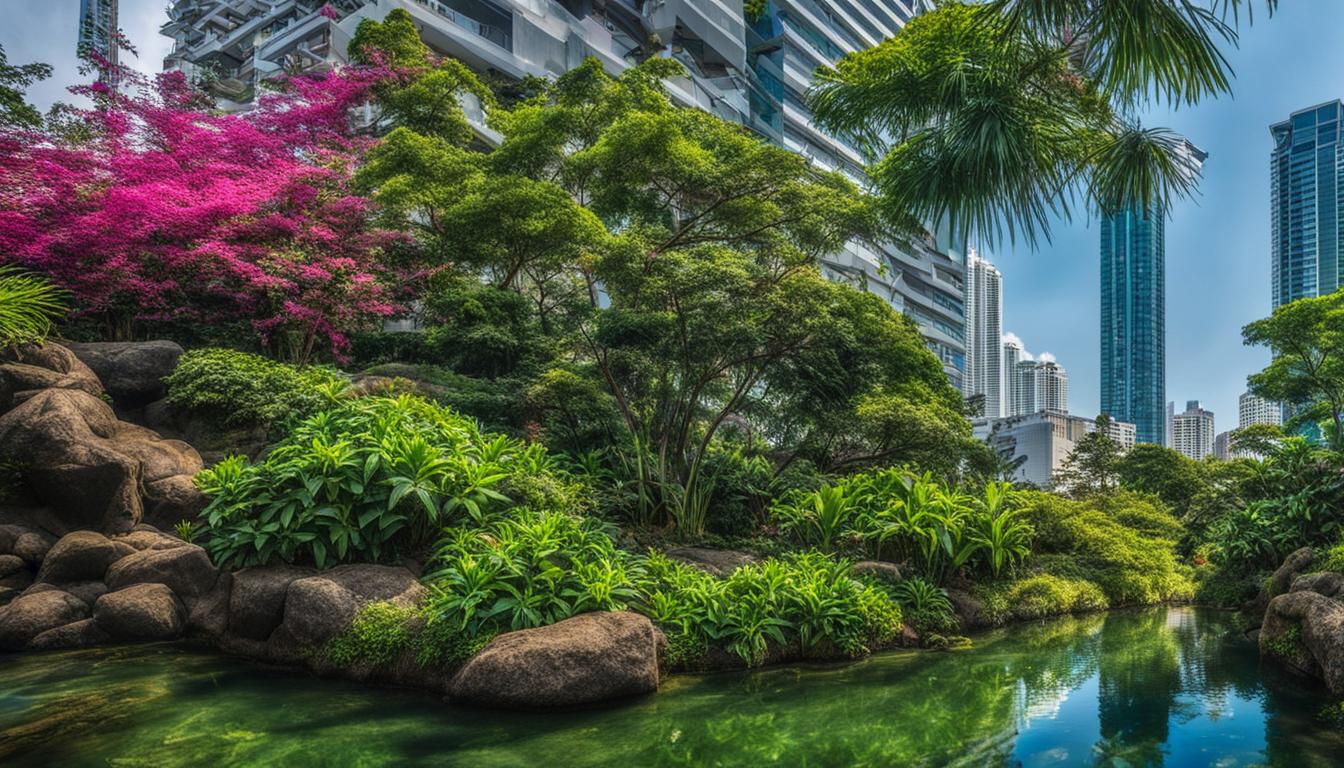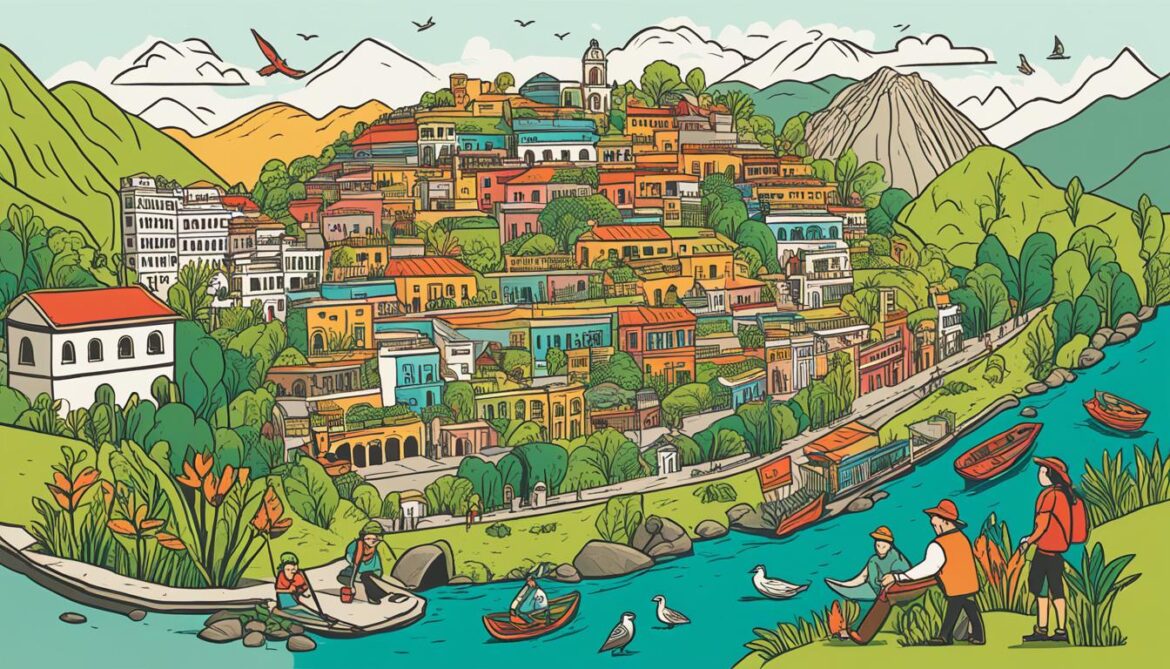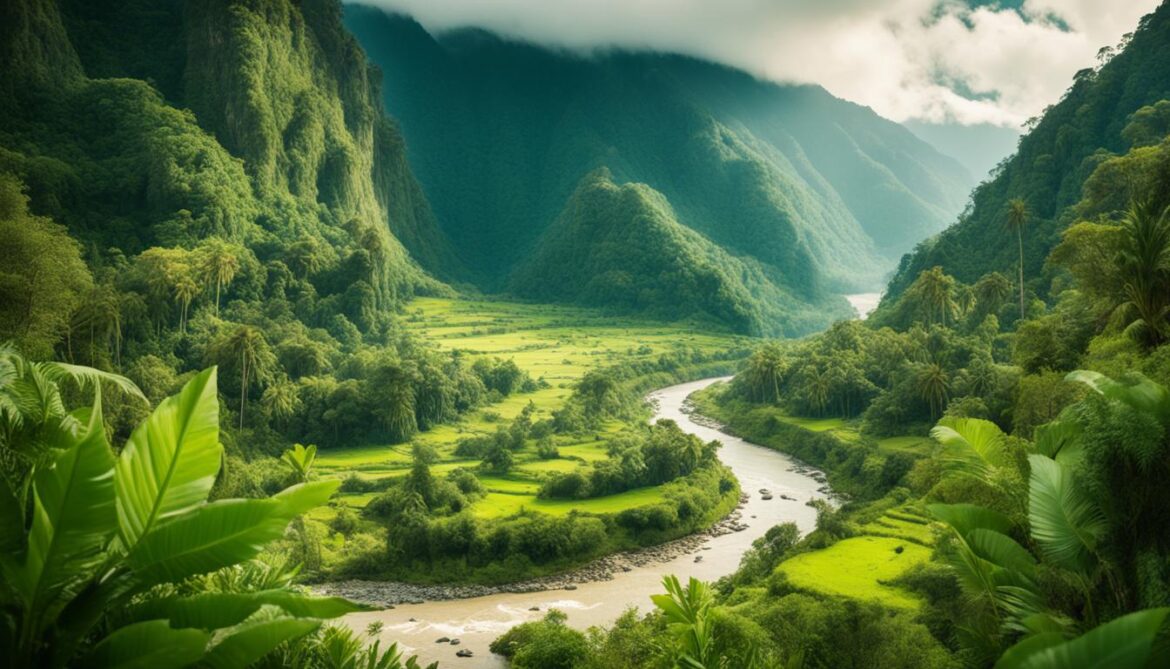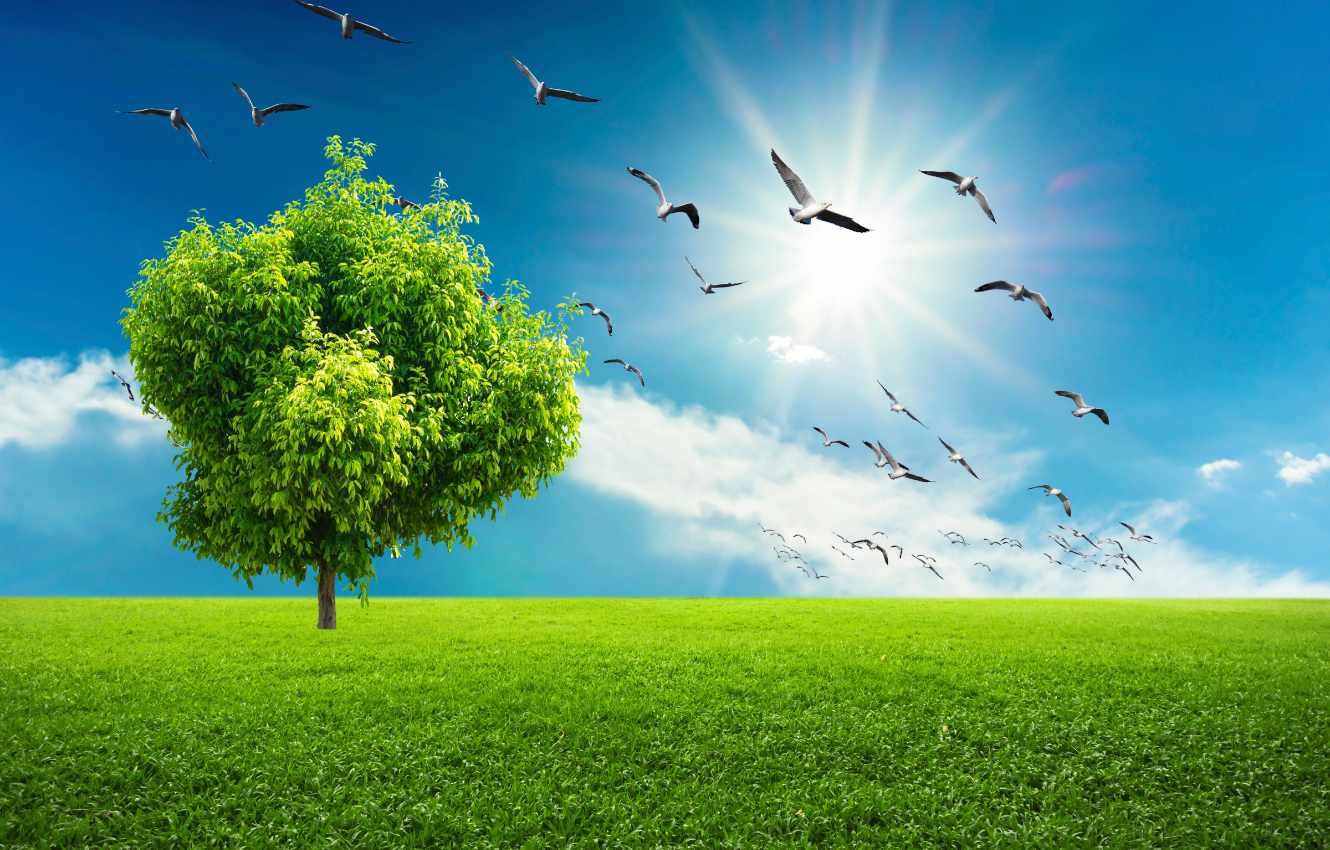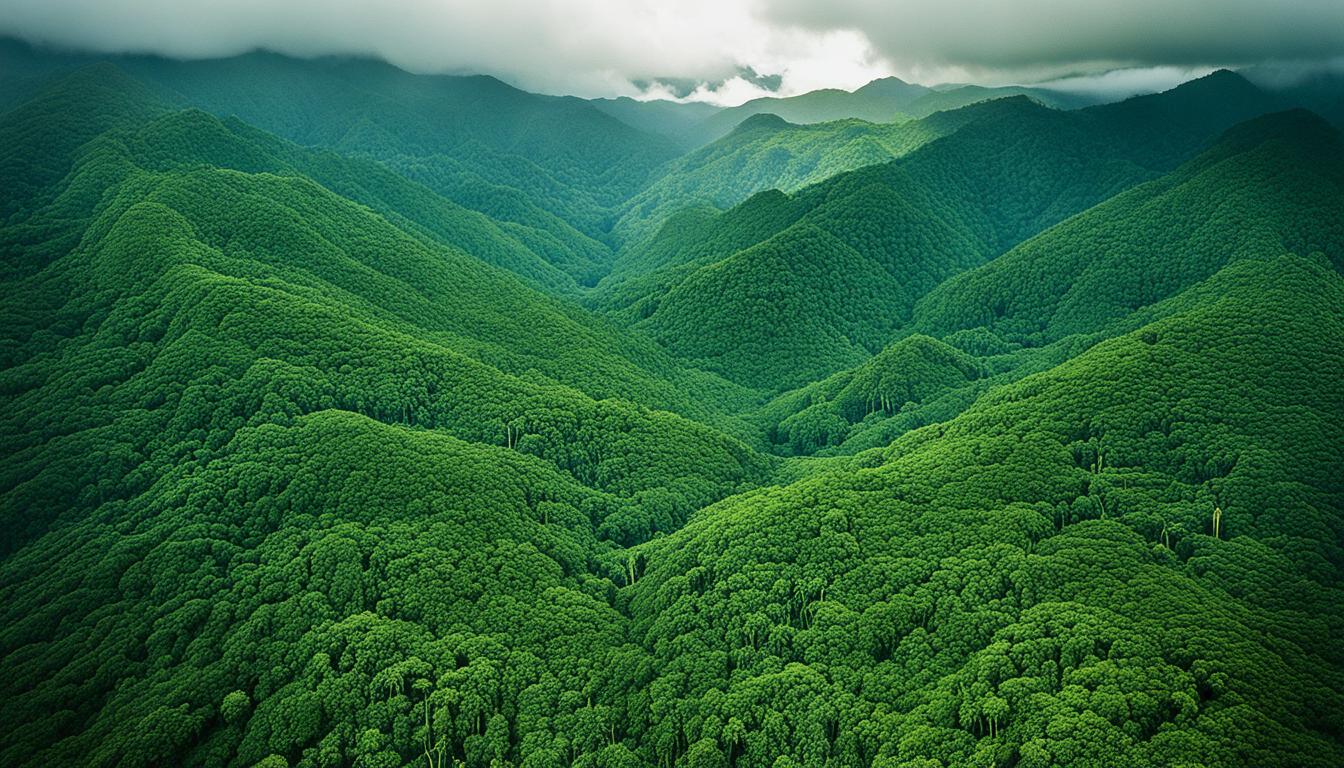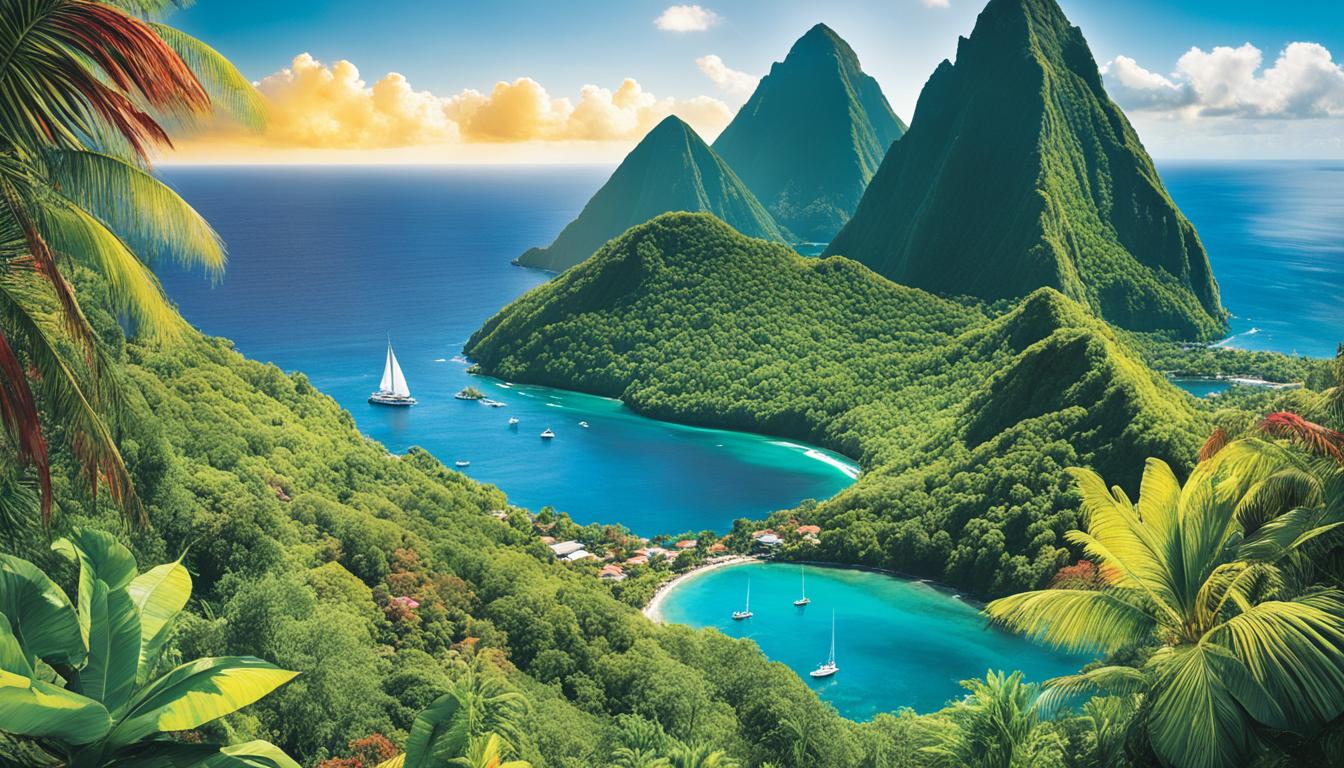Peru Biodiversity and the Built Environment
Did you know that Peru is one of the world’s top 10 “megadiverse” countries?
With its diverse ecosystems that include the Amazon rainforest and the Andes mountain range, Peru is home to approximately 25,000 species of plants and 695 known breeding bird species. The country’s rich biodiversity is of global significance and requires sustainable management and protection.
Key Takeaways
- Peru is one of the world’s most biodiverse countries, with diverse ecosystems that include the Amazon rainforest and the Andes mountain range.
- The country is home to approximately 25,000 species of plants and 695 known breeding bird species.
- Sustainable architecture, eco-friendly design, and urban planning are essential for preserving Peru’s biodiversity and promoting sustainable development.
- Habitat preservation and environmentally friendly infrastructure play crucial roles in protecting Peru’s ecosystems.
- Efforts are needed to ensure the conservation of Peru’s unique species and environments for future generations.
Peru’s Ecological Diversity
Peru, with its stunning natural landscapes, is a sanctuary for nature enthusiasts and a haven for a diverse range of ecosystems. The country boasts 11 distinct ecological regions and 84 different life zones, making it a treasure trove of biodiversity. From the lush Amazon rainforest to the majestic Andes mountain range, Peru’s ecological diversity is awe-inspiring.
Within these diverse ecosystems, Peru is home to an abundance of wildlife. Approximately 2000 species of fish, 460 species of mammals, 695 species of breeding birds, and an estimated 25,000 plant species call Peru their home. This rich variety of flora and fauna contributes to the country’s status as one of the most biodiverse nations on Earth.
However, Peru’s ecological diversity also highlights the importance of biodiversity preservation. Several species found within Peru’s ecosystems are endangered and in need of protection. Among these are the Andean Titi Monkey, Andean Mountain Cat, and Yellow-tailed Woolly Monkey. These remarkable creatures, along with many others, rely on the preservation of their habitats for their survival.
“The richness and diversity of Peru’s ecosystems are a testament to the incredible natural heritage the country possesses.”
To safeguard Peru’s ecological treasures, it is crucial to prioritize biodiversity preservation. Measures such as establishing protected areas, implementing sustainable practices, and raising awareness about the importance of conservation play a vital role in ensuring the long-term survival of Peru’s unique and endangered species.
Next, we will delve deeper into the diverse ecosystems that make Peru a global hotspot for biodiversity. From the awe-inspiring Amazon rainforest to the breathtaking landscapes of the Andes and beyond, Peru’s natural wonders never cease to amaze.
The Diverse Ecosystems of Peru
Peru is a country blessed with a variety of diverse ecosystems, each exhibiting its own unique conditions and supporting a wide array of life forms. This remarkable ecological diversity is one of the key factors that contribute to Peru’s status as one of the most biodiverse countries on Earth. Let’s explore some of Peru’s captivating ecosystems:
The Amazon Rainforest
The vast Amazon rainforest covers a significant portion of Peru’s territory. Spanning over 782,000 square kilometers, this rich and dense tropical rainforest houses an astonishing number of plant and animal species. With its towering trees, winding rivers, and vibrant biodiversity, the Amazon rainforest is truly a natural wonder.
The Andes Mountains
In addition to the expansive rainforest, Peru is also home to the stunning Andes mountains. Stretching over 7,000 kilometers along the western coast of South America, the Andes mountain range spans several countries, including Peru. These majestic mountains are not only a sight to behold but also provide unique habitats for a fascinating variety of flora and fauna.
The Pacific Coast
Peru’s Pacific coast is adorned with an abundant marine life, making it another significant ecosystem in the country. The coastal waters are home to diverse species of fish, birds, and marine mammals. The Humboldt Current, a nutrient-rich ocean current, provides the perfect conditions for bustling marine ecosystems.
The Puna Grasslands
Located at high altitudes, the Puna grasslands are a unique ecosystem found in the Andean highlands of Peru. This vast region consists of grassy plains, wetlands, and rugged peaks. Despite being inhospitable to many forms of life, the Puna grasslands are home to specialized plant and animal species that have adapted to the harsh conditions.
The Dry Forests and Deserts
Peru is not only characterized by lush rainforests and towering mountains but also by dry forests and deserts. These arid landscapes, found mainly on the coastal and southern regions of the country, are home to resilient plant species that can thrive in the extreme dry conditions. These ecosystems have a unique beauty and provide habitats for a variety of wildlife.
Peru’s diverse ecosystems not only contribute to its natural beauty but also play a crucial role in supporting a wide range of species, many of which are endemic and endangered. These ecosystems are teeming with life, harboring species found nowhere else on Earth. Let’s take a moment to marvel at the splendor of Peru’s natural world.

Unique Species and Impressive Records
Peru is renowned for its astonishing biodiversity and is home to a remarkable array of unique species. The country has achieved impressive records in terms of the number of species it harbors, making it a haven for wildlife enthusiasts and researchers alike.
Fish Species:
Peru boasts the highest number of fish species globally. Its diverse aquatic ecosystems, including the Amazon river basin and the Pacific coast, provide habitats for an astonishing variety of fish. From vibrant tropical species to elusive deep-sea dwellers, Peru’s waters teem with life.
Mammal Species:
With the third-highest number of mammal species, Peru is a paradise for mammal enthusiasts. From the iconic jaguar to the adorable spectacled bear, Peru’s forests and jungles are inhabited by an incredible diversity of mammals. These creatures play crucial roles in maintaining the delicate balance of their ecosystems.
Breeding Bird Species:
Peru is home to the third-highest number of breeding bird species in the world. Its diverse habitats, ranging from the lush rainforests to the high-altitude Andean plains, provide ideal conditions for these avian treasures. Birdwatchers flock to Peru to catch a glimpse of some of the rarest and most beautiful birds on Earth.
National Animals:
Peru takes pride in its unique national animals. The vicuña, a graceful camelid prized for its soft and valuable wool, represents Peru’s natural heritage and is an emblematic species. The mighty condor, with its impressive wingspan, is considered a symbol of power and freedom.

Among Peru’s natural wonders, one stands out – the Puya raimondii. This extraordinary plant claims the title of the world’s tallest flowering plant, reaching heights of up to 15 meters. Its magnificent cone-shaped inflorescence, composed of thousands of individual flowers, is a sight to behold.
Peru’s unique species and impressive biodiversity are testaments to the country’s commitment to conservation and preservation. Efforts to protect these invaluable treasures are crucial to ensure their survival for generations to come.
Protected Areas and Threats to Biodiversity
In Peru, there are 63 protected areas that cover 17.9% of the country’s territory. These areas include national parks, reserves, sanctuaries, and wildlife refuges, all aimed at preserving the rich biodiversity of the region.
However, despite these protective measures, Peru still faces significant threats to its biodiversity. Deforestation is one of the major concerns, driven by activities such as logging and the expansion of farming land. This destruction of natural habitats poses a grave risk to countless species.
Another challenge is climate change, which affects ecosystems and disrupts the delicate balance of nature. Rising temperatures, unpredictable weather patterns, and changing rainfall can lead to the decline of certain species and the alteration of entire ecosystems.
Additionally, extractive activities, such as mining and oil exploration, have detrimental effects on biodiversity. The extraction of natural resources often involves the destruction of habitats and the pollution of surrounding areas.
Efforts are needed to address these threats and implement sustainable practices that protect Peru’s rich biodiversity. Striking a balance between economic development and conservation is crucial to safeguarding the unique ecosystems and endangered species that call Peru home.
Conservation Initiatives and Volunteering Opportunities
Peru is dedicated to conserving its valuable biodiversity through a range of initiatives and volunteering opportunities. These efforts involve extensive research, effective management strategies, and educational programs. By actively participating in these initiatives, individuals can make a significant impact in preserving Peru’s diverse ecosystems and wildlife.
Volunteering opportunities in Peru provide a unique chance to directly contribute to research and conservation projects. Volunteers can engage in various activities, including mammal conservation, permaculture practices, and primate studies. By working alongside experts in the field, volunteers play a crucial role in protecting endangered species and their habitats.
Volunteering in Peru is an enriching experience that allows individuals to immerse themselves in the country’s natural beauty while contributing to vital conservation efforts.
Research is a key component of Peru’s conservation initiatives. Through scientific studies, researchers gain crucial insights into the complex ecosystems and identify effective conservation strategies. By supporting research efforts, individuals help generate knowledge that guides conservation practices and promotes long-term sustainability.
In addition to research, management strategies are implemented to ensure the effectiveness of conservation initiatives. These strategies involve sustainable land use practices, habitat restoration projects, and wildlife management plans. By actively participating in such initiatives, volunteers contribute to the preservation and restoration of Peru’s natural resources.
Education and Outreach
Recognizing the importance of education in fostering a culture of conservation, Peru offers comprehensive educational programs. These programs aim to raise awareness about the significance of biodiversity, the impacts of human activities, and the need for sustainable practices. By engaging local communities, schools, and tourists, these educational programs create a strong foundation for environmental stewardship.
“Education is the most powerful tool we have for a sustainable future. By empowering individuals with knowledge, we can inspire positive change.”
To give you an idea of the volunteering opportunities available in Peru, here is a table that highlights some of the ongoing projects in the country:
Volunteering Opportunity Project Area Duration Mammal Conservation Amazon Rainforest 6 weeks Permaculture Practices Andean Highlands 2 months Primate Studies Cloud Forests 3 months These volunteering opportunities offer individuals a chance to contribute their skills and passion to specific conservation projects across Peru. Whether you are interested in wildlife conservation, sustainable agriculture, or ecosystem research, there is a volunteering opportunity to suit your interests and make a meaningful difference.
By actively participating in Peru’s conservation initiatives and volunteering opportunities, individuals can not only witness the country’s remarkable biodiversity but also contribute to its long-term preservation. Whether through research, management strategies, or educational programs, every effort counts towards protecting Peru’s invaluable ecosystems and ensuring a sustainable future for generations to come.
Policies and Governance Approach
The Government of Peru has implemented comprehensive policies and a strong governance approach to protect and sustainably manage the country’s rich biodiversity. These policies focus on the conservation of natural resources, sustainable development, and the promotion of biodiversity.
Peru has established a National Commission on Biological Diversity, which plays a key role in coordinating efforts to conserve biodiversity and ensure its sustainable use. The commission collaborates with various stakeholders, including government agencies, indigenous communities, and civil society organizations, to develop and implement effective strategies for biodiversity conservation.
The National Strategy on Biological Diversity provides a roadmap for achieving sustainable development while safeguarding biodiversity. It outlines goals and targets for biodiversity conservation, including the establishment of protected areas and the implementation of sustainable management practices.
Peru has made significant progress in expanding its national system of protected natural areas. These protected areas serve as crucial habitats for diverse ecosystems and endangered species, ensuring their long-term survival. The government’s commitment to expanding and managing these protected areas demonstrates its dedication to biodiversity conservation.
The governance approach in Peru emphasizes the participatory involvement of local communities and indigenous groups, recognizing their invaluable traditional knowledge and stewardship of natural resources. This collaborative approach promotes sustainable practices and ensures the effective management of protected areas.
Efforts are continually being made to strengthen policies, enhance governance mechanisms, and integrate biodiversity conservation into various sectors, such as agriculture, fisheries, and tourism. Peru’s proactive approach in policy-making and governance sets a positive example for countries worldwide in balancing development with the preservation of biodiversity.
Facts about Peru’s Biodiversity and Environment
Peru is known as one of the world’s top 10 “megadiverse” countries, boasting a remarkable array of flora and fauna. With approximately 25,000 species of plants and 695 known breeding bird species, Peru’s biodiversity is truly astounding.
In terms of fish species, Peru holds the highest number globally, showcasing the exceptional diversity of marine life found in its waters. Additionally, Peru has the second-highest number of marine fish catch, highlighting the importance of its marine ecosystems.
When it comes to land coverage, approximately 73 million hectares of Peru’s territory are covered by forests, contributing to the country’s ecological balance and providing critical habitats for numerous species.
Although Peru has made significant conservation efforts, it still faces challenges in protecting its biodiversity. Deforestation remains a concern, as it poses a threat to the habitats of countless animal and plant species. Additionally, greenhouse gas emissions contribute to climate change, further impacting Peru’s environment and its delicate ecosystems.
“We have not inherited the Earth from our ancestors; we have borrowed it from our children.” – Native American Proverb
Peru recognizes the importance of biodiversity conservation and has signed international agreements and treaties to promote sustainable practices. The country has a significant share of the Amazon rainforest, which plays a crucial role in maintaining global biodiversity and mitigating climate change.
Key Facts about Peru’s Biodiversity Key Facts about Peru’s Environment Approximately 25,000 species of plants About 73 million hectares of forest cover 695 known breeding bird species Challenges: deforestation and greenhouse gas emissions Highest number of fish species globally Peru’s significant share of the Amazon rainforest Second-highest number of marine fish catch Conclusion
Peru’s extraordinary biodiversity and diverse ecosystems make it a true treasure trove of natural wonders. However, the country faces numerous challenges in safeguarding its rich natural heritage. Deforestation, climate change, and extractive activities pose significant threats to Peru’s biodiversity.
Fortunately, Peru has not been idle in the face of these challenges. With a commitment to sustainable development and conservation efforts, the country has implemented various policies and initiatives to protect its biodiversity. The government has established protected areas, expanded the national system of natural reserves, and developed strategies for sustainable resource management. These conservation efforts are crucial to ensure the preservation of Peru’s unique species and ecosystems.
However, the work is far from over. Continued efforts are needed to address the ongoing threats and promote sustainable practices. It is essential to engage in research, education, and volunteering opportunities that contribute to the conservation of Peru’s biodiversity. By working together, we can protect Peru’s natural heritage and create a sustainable future for generations to come.
FAQ
What is Peru Biodiversity and the Built Environment?
Peru Biodiversity and the Built Environment refers to the relationship between Peru’s diverse ecosystems and the sustainable design and development of urban areas. It involves incorporating eco-friendly practices, green infrastructure, and habitat preservation to minimize the negative impact on Peru’s biodiversity and promote sustainable development.
Why is biodiversity preservation important in Peru?
Biodiversity preservation is important in Peru because the country is home to a vast array of plant and animal species, many of which are found nowhere else in the world. By preserving biodiversity, we can protect valuable ecosystems, contribute to climate regulation, support local communities, and maintain the overall health of the planet.
What are the key ecosystems found in Peru?
Peru is home to diverse ecosystems, including the Amazon rainforest, the Andes mountains, the Pacific coast, the Puna grasslands, and the dry forests and deserts. These ecosystems provide unique habitats for a wide range of plant and animal species.
What are some of the unique species found in Peru?
Peru is known for its unique species, including the Andean Titi Monkey, Andean Mountain Cat, Yellow-tailed Woolly Monkey, vicuña, and condor. It is also home to the Puya raimondii, the world’s tallest flowering plant.
What threats does Peru’s biodiversity face?
Peru’s biodiversity faces threats from deforestation, driven by activities such as logging and expansion of farming land. Climate change and extractive activities, such as mining and oil drilling, also pose risks to Peru’s ecosystems and wildlife.
What conservation initiatives can I get involved in Peru?
There are various conservation initiatives in Peru that you can get involved in as a volunteer. These initiatives focus on research, management strategies, and educational programs. You can contribute directly to projects such as mammal conservation, permaculture practices, and primate studies, while making a lasting impact on Peru’s ecosystems.
What policies are in place to protect Peru’s biodiversity?
The Government of Peru has implemented policies to protect and sustainably use the country’s biodiversity. These policies focus on conservation, sustainable development, and the promotion of biodiversity. Peru has a National Commission on Biological Diversity and a National Strategy on Biological Diversity. The country also has a national system of protected natural areas.
What are some interesting facts about Peru’s biodiversity?
Peru boasts an impressive array of biodiversity, with approximately 25,000 species of plants and 695 known breeding bird species. It has the highest number of fish species globally and the second-highest number of marine fish catch. Peru also has about 73 million hectares of forest cover and is home to threatened animal species.
Why is sustainable development important for Peru?
Sustainable development is important for Peru to ensure the long-term well-being of its people and its natural resources. By balancing economic growth with environmental conservation, Peru can maintain its rich biodiversity, preserve cultural heritage, and promote social equity.




